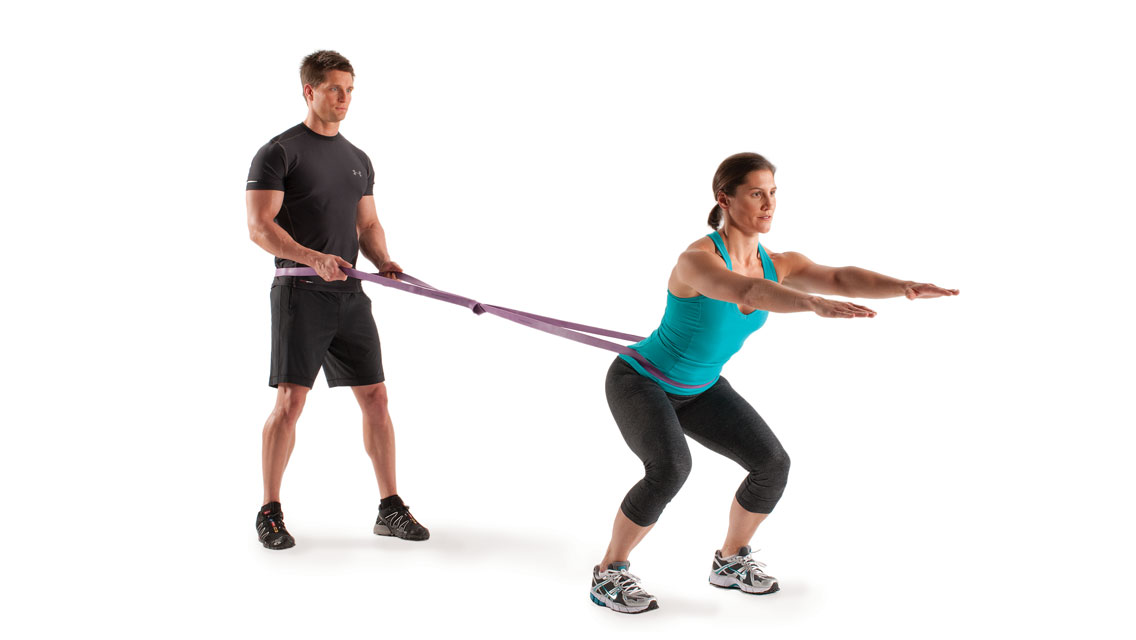EXERCISE SHORTCUTS
Squat Jumps | Power Skipping | Tuck Jumps | Two-Legged Lateral Jump | Jumping Jacks | In-and-Out Jumps | Medicine Ball Slam | Medicine Ball Chest Pass | Sprinting
When you consider how many activities involve jumping, juking, or otherwise rapidly stretching and contracting your muscles, it’s not surprising that fitness experts encourage plyometrics. Done correctly and consistently, these exercises help you jump higher and run faster, while preventing injuries. They will help you burn fat and sculpt some very attractive new muscles. Plus, they’re fun.
“As kids, we all knew that skipping was much more fun than walking,” notes Marissa Lysaght, MPH, CSCS, owner of Fitness Redefined training studio in Jupiter, Fla. “Doing plyometrics is like revisiting the playground.”
Once reserved for high-level athletes, plyometrics have grown in popularity among the broader health-club set. People are flocking to exercises that include body-weight moves such as hops and jumps, as well as medicine-ball throws, explains Christopher T. Ray, PhD, ATC, CSCS, a professor of kinesiology at the University of Texas at Arlington. “What makes it ‘plyometric’ is the speed of the activity, not the body part it works,” Ray says.
That speed is key to boosting performance. “Providing explosive force increases the body’s efficiency in recruiting energy,” he explains. In other words, when you dip and jump quickly, or forcefully toss a weighted ball, you’re specifically training your neuromuscular system to be more explosive. (For more, see “Elastic Energy”.)
The speed of plyometrics is also a great counterpoint to weight training, notes Shawn Myszka, CSCS*D, SPS, athletic performance director for Explosive Edge Athletics in Edina, Minn., and one of the foremost plyometrics experts in the nation.
Resistance training typically involves a deceleration as you perform the motion (think of a bench press or squat where you are slowest at the end of the movement). Plyometric exercises, on the other hand, require that you accelerate throughout your range of motion. “This better mimics real-world movement,” Myszka says. When you walk or run, he notes, you don’t slow down at the end of each step. “You push off the ground and into your next step.”
Myszka argues that too much weight training can program you to be slower unless you balance it with plyometrics. Endurance athletes should embrace plyos, too, for that extra kick at the end or that extra push when cresting a hill.
But before you jump in, take stock of your fitness level. If you’re fresh off the couch, build strength and overall fitness, then gradually add in a few basic plyometric exercises. “Upper-body plyometrics, such as medicine-ball partner drills, are generally safer than lower-body plyometrics,” says Larry R. Woodruff, MS, MEd, CSCS, senior lecturer in the Exercise and Wellness Program at Arizona State University.
Once you’ve established a good strength and endurance base, try the following plyometrics primer. Do this workout just once a week for at least the first six to eight weeks; then ramp it up to no more than twice a week, experts say — the forceful nature of the exercises demands a lot from soft tissue.
Setting
If your gym offers an open area with mats and medicine balls, start there. If not, any stable, forgiving surface will do (grass, carpet, an outdoor track). For the medicine-ball drills, find a partner to practice with, or get a rubber ball that bounces and do the exercises by yourself against a wall or the floor.
Warm Up
In order for plyometrics to be effective and not invite injuries, they require a thorough warm-up. Spend 10 to 20 minutes doing a variety of activities such as jogging, using the elliptical on a low setting, performing walking lunges, and doing pushups to warm up your muscles and help lubricate the joints. (See also “The Art of the Warm-Up”.)
Pointers
Up your oomph. True plyometrics involve explosive movement and an acceleration throughout your entire range of motion. Momentum is key. The faster the muscle is stretched (eccentric phase) and then shortened (concentric phase), the more force you’ll produce. Over time, this translates to more powerful muscle contractions, better agility and more overall speed.
Focus on form. Even though you’re performing each exercise with explosive momentum, take time to rest a minute or two between sets (or before moving on to the next movement). “This isn’t a boot-camp-style workout where you plow through as fast as you can,” Myszka explains. “Start out doing single-response reps — meaning, complete the move and take stock of your form before heading into the next rep.” You’ll get better muscle recruitment as a result.
Watch your knees. Don’t let them dive inward (making them valgus, or knock-kneed) during your takeoffs or landings.
Choose your challenge level. These moves are fairly basic, and the loads light, to help get you started on the right foot. Begin by doing six to eight reps of each drill listed here, and go through the circuit two to three times. Over time, once these begin to feel easy, add a few more reps and increase your speed, or add more rounds. Too hard as is? Scale it back to three or four reps of each drill.
(To see all the moves in action visit “Plyometrics: Might as Well Jump! (Video).)
The Drill
1.) Squat Jumps
Keep your knees straight on the landing, and your body will do the rest of the work to keep you safe during this drill, Myszka says. “Just jump as high as you can, and squat to a depth that feels comfortable without straining your knees.”
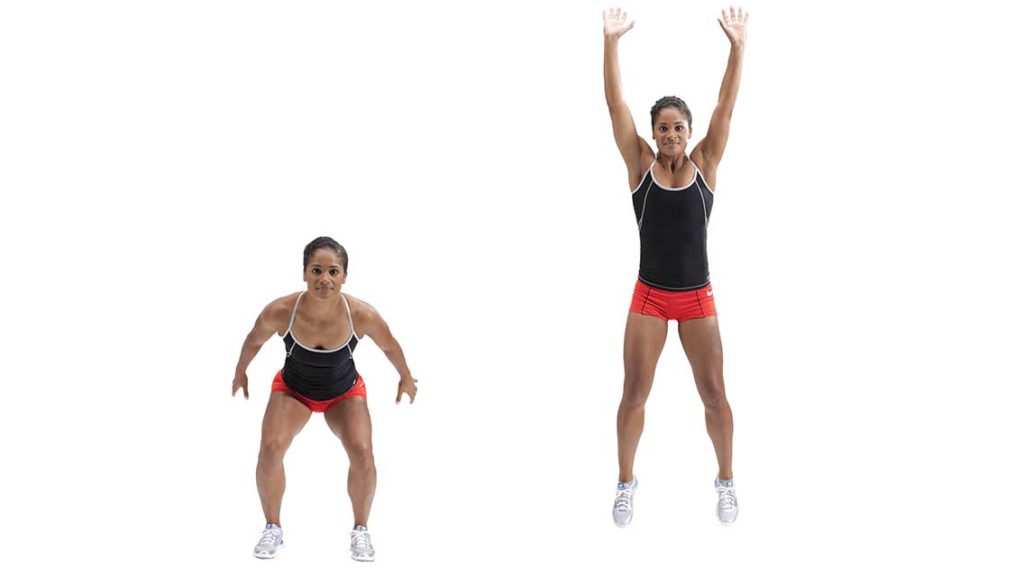
- Stand with your feet shoulder-width apart.
- Squat down, and then with one explosive movement, jump up as high as you can.
- Upon landing, squat down and immediately jump again.
2.) Power Skipping
Power skipping is exactly what it sounds like: Think back to your playground days when skipping came naturally. This time, you’re just going to put a little more oomph into it.

- With each skipping motion, push off the ground forcefully and lift your knee as high as you can.
- Repeat with the other knee for one rep.
3.) Tuck Jumps
For this move, your abdominals and hips will get a workout, too, since you recruit them to help tuck your knees up, Myszka notes. The soft, gentle landing is essential to minimize the impact on your muscles and tendons.
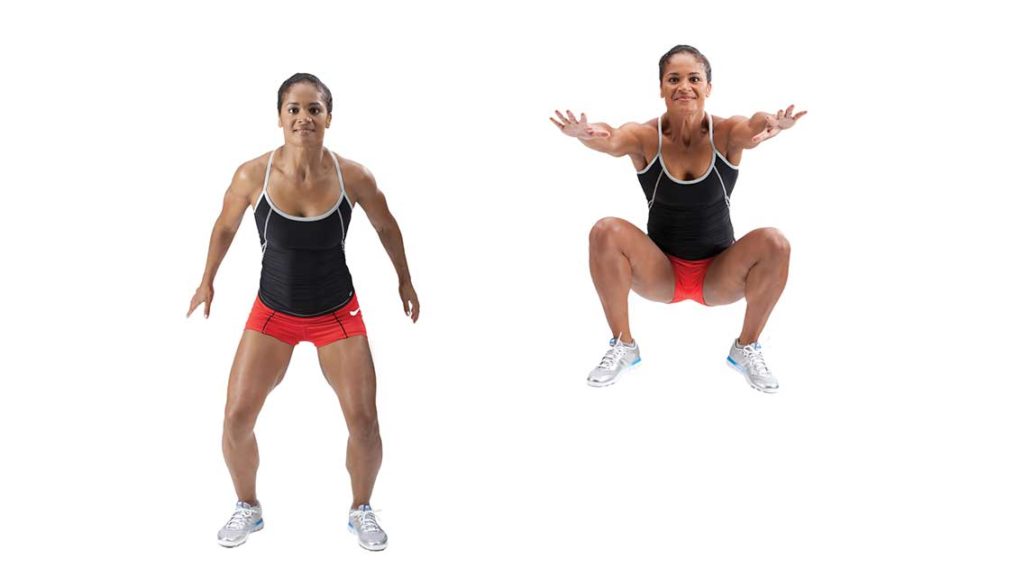
- Stand with your feet shoulder-width apart.
- In one explosive move, dip down and jump up, lifting your knees into your chest. Swing your arms upward in front of you as you jump to help get more height.
- On the way down, straighten your legs and try to land softly on the balls of your feet.
- Once your feet touch the ground, immediately recoil and jump again.
4.) Two-Legged Lateral Jump
Make sure you take off and land with two feet, Myszka cautions. As you improve, you’ll notice you will jump higher on the takeoff and squat deeper on the landing.

- Begin by marking a straight line a few feet long on the floor with a piece of tape.
- Stand to one side of the tape and bend from your knees and waist into a slight squat.
- In one explosive movement, jump laterally over the tape, landing softly in a squat on the other side.
- Immediately spring back to the other side to complete one repetition.
5.) Jumping Jacks
Another blast from the past, jumping jacks are ideal for training your fast-twitch muscle fibers and building explosive strength.
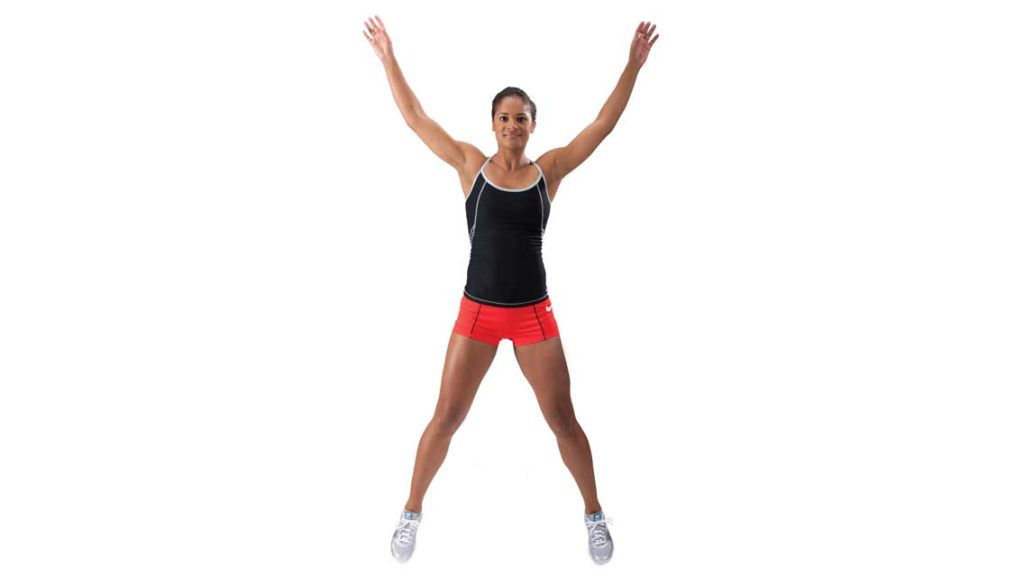
- Start with feet together and arms straight at your sides.
- In one fluid move, push off the balls of your feet and spread your legs outward while lifting your arms up over your head.
- Return to the starting position for one rep.
6.) In-and-Out Jumps
This works your adductors and abductor muscles in your thighs, notes Myszka.

- Begin by standing in a narrow stance, feet together.
- Squat down to where you’re comfortable and jump up, landing lightly in a wider stance (feet hip-width apart).
- Immediately squat down and repeat.
7.) Medicine Ball Slam
Medicine balls are a great way to build explosive strength and power in the upper body (think passing a basketball, returning a serve in tennis or lunging for that elusive hand hold on the climbing wall).

- Stand with your feet shoulder-width apart and knees slightly bent.
- Hold a 10- to 15-pound medicine ball above your head with both hands.
- In one explosive motion, forcefully throw the ball down on the floor as hard as you can.
- Catch the ball on the rebound and repeat, maintaining your form with each rep.
8.) Medicine Ball Chest Pass
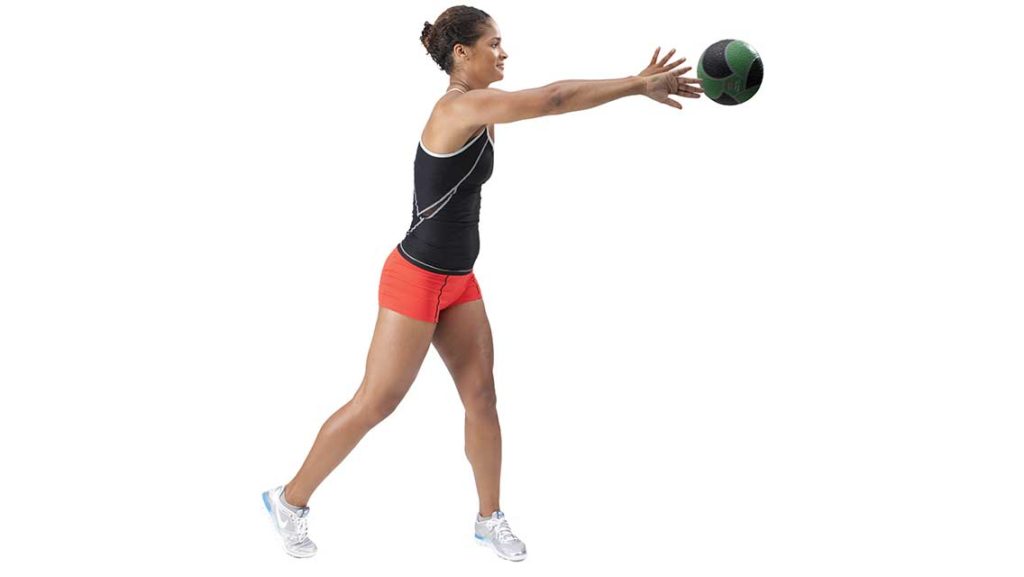
- Stand with one shoulder a few feet from a wall, holding a lighter-weight medicine ball at your chest.
- “Locking” your abs to your rib cage, turn from the hips and swivel your feet to throw the ball against the wall as forcefully as possible.
- Catch and repeat.
- You can also perform this drill with a partner.
9.) Sprinting
Sprinting, by definition, counts as plyometrics, since it’s an explosive movement and your feet touch the ground for less than a millisecond, Myszka says.
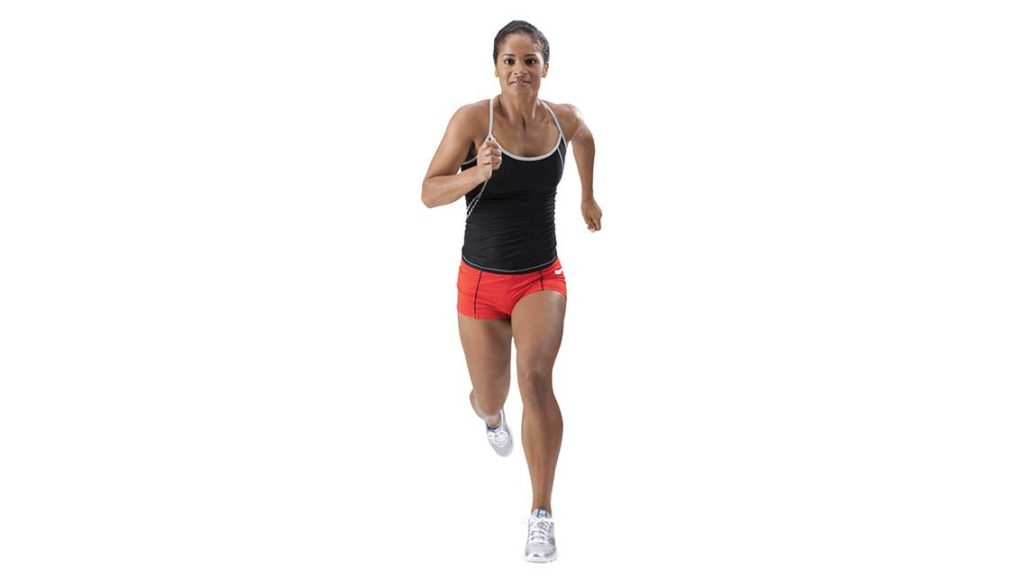
- Sprint the length of the room (or a straightaway if you’re on the track) for 30 yards.
- Walk for a few minutes to cool down.
(To see all the moves in action visit “Plyometrics: Might as Well Jump! (Video).)
Looking for more plyometric workout ideas? See:



